Decibels and dilemmas: Tackling Dhaka's noise pollution crisis

Starting in December, the interim government of Bangladesh has announced strict penalties for the use of horns in Dhaka, with fines of Tk 500 for first-time offenders, and then a larger fine for repeat violations. This initiative aims to eliminate the pervasive noise pollution caused by honking, beginning with key areas in the capital, before expanding to the entire city and eventually to other divisional towns.
The adviser on Environment, Forest and Climate Change has emphasised the need for public awareness to change the long-standing habit of honking before enforcing the law. This plan involves educating both drivers and the general populace about the negative impacts of noise pollution before implementing fines.
However, it's crucial to recognise that noise pollution in Dhaka is not limited to horns; it also stems from loudspeakers, advertisements, and construction activities. The interim government has expressed its commitment to creating a "low-noise" country by curtailing all forms of noise pollution.
As of October 1, a three-kilometre radius around Hazrat Shahjalal International Airport has been designated as a "silent zone," where honking is strictly prohibited, with potential fines or imprisonment for violators.
The question that arises is whether this is the first time a decision to curb honking has been made? The answer is a resounding no. Previous efforts have been initiated, and laws established, but effective enforcement has been glaringly absent. Given the social realities in Dhaka, can simply instituting fines lead to a sudden reduction in honking? Without addressing the underlying issues and adding comprehensive measures, this initiative risks becoming yet another unfulfilled promise.
In 2017, hydraulic horns were banned, yet no action has been taken against other high-decibel horns. Reports indicate that some horns produce noise levels as high as 110 decibels. While imports of such horns remain unchecked, honking itself seems secondary when the primary issue—importing excessively loud horns—has not been adequately addressed.
The Department of Environment actions against honking often appear to be sporadic and event-focused. Although the Road Transport Act stipulates a fine of Tk 10,000 for using loud horns, this has never been enforced. Frustrated citizens have voiced their irritation at the habitual honking, with awareness campaigns on social media and elsewhere yielding little substantive change. Without sustained actions throughout the year, these campaigns serve more as announcements than solutions.
While the department has announced maximum permissible decibel levels for honking in Dhaka, no initiatives exist to ensure vehicles or motorcycles comply with these regulations during manufacturing or assembly. Car manufacturers themselves have noted that while hydraulic horns are prohibited, there are no clear guidelines regarding other types of horns.
In 2007, a ban on honking was announced on several roads in Dhaka, followed by reports of daily fines imposed by the authorities. Today, however, such enforcement seems nonexistent, as horns continue to blare throughout the city. Many drivers do not perceive honking as a violation.
The Noise Pollution Control Rules established in 2006 define acceptable noise levels in different areas of the capital, allowing for a maximum of 40 decibels at night in silent zones and 50 decibels during the day. In residential areas, these figures rise to 45 and 55 decibels, respectively. Given that a vehicle is equipped with a single horn, it should theoretically not exceed 40 decibels. However, environmental monitoring has consistently shown that many horns in Dhaka exceed these levels.
This noise pollution significantly impacts public health. A study found that 42 percent of rickshaw drivers suffer hearing issues due to exposure to high-decibel horns, while 11.8 percent of traffic police have experienced hearing damage.
The lack of governmental focus on this issue has hindered meaningful progress. However, effective regulation could yield positive results, as evidenced by the increased helmet usage among motorcycle riders. Just a few years ago, helmet use was minimal, yet regulations have now made it mandatory for both riders and passengers.
Discussions surrounding air pollution often overlook the critical aspect of noise pollution, resulting in it remaining a low priority for the Department of Environment, which tends to focus on event-based initiatives. Addressing noise pollution requires continuous and systematic action, not just temporary measures.
Two key factors must be prioritised: the creation and enforcement of laws, and public awareness. Unfortunately, action in these areas has been insufficient.
Regulations must mandate that no horn exceeding 40 decibels can be used in the manufacturing or import process. Without metres to measure decibel levels, individuals cannot ascertain whether they are using a 40 or 60-decibel horn. Therefore, effective control must occur during production and distribution, clearly instructing manufacturers to restrict the use of horns exceeding 40 decibels. Many developed countries, as well as our neighbouring nations like Nepal and Sri Lanka, have successfully curtailed horn use. In many countries, honking is inaudible from 10 feet away, yet in Bangladesh, it can be heard from half a kilometre or more.
Surveys conducted among those with hearing impairments reveal that seven percent have suffered such significant damage that they now require hearing aids. Additionally, 14 percent have experienced substantial hearing loss and may need hearing aids soon.
The negative health impacts of horn and loudspeaker-induced noise pollution extend far beyond hearing loss. Prolonged exposure can lead to high blood pressure, sleep disturbances, irritability, and various mental health issues. Vulnerable populations, which include children and the elderly, are especially at risk as excessive noise can impede children's development and increase the likelihood of heart attacks or strokes in the elderly.
In terms of profession; the individuals most affected by this issue are rickshaw drivers, bus and truck drivers, and traffic police, as they spend the most time on the road. Yet, there seems to be little awareness of these dangers.
While we recognise the problems and the urgency for fines, is this enough? Certainly not. A comprehensive approach is needed. Let us discuss what additional integrated measures can be taken.
For one, implementing fines for honking brings certain challenges. Given the severe traffic congestion and the overwhelming presence of vehicles, both drivers and pedestrians are accustomed to a noisy environment. Many drivers may refrain from using their horns in emergencies for fear of penalties, potentially leading to accidents. Moreover, a significant number of pedestrians ignore footbridges and unpredictably step onto the road. Therefore, public awareness campaigns must precede any implementation of fines, alongside stricter laws promoting the use of footbridges and pedestrian crossings.
The initial focus must be on strictly banning the importation and use of high-decibel horns. The root cause must be addressed by tackling the primary sources of noise pollution. This includes improving road infrastructure, constructing new roads, and planning alternative traffic management systems.
Specific lanes should be allocated for ambulances and emergency services to expedite their response times, while regular traffic is required to yield. The number of public transportation options, such as buses, metro lines, and trains, should be increased and optimised for efficiency.
It is also essential to regulate the number of microbuses and rickshaws on urban roads, including proper registration. Advanced technology should be utilised to control horn levels, such as the introduction of automatic horn silencing devices.
Public awareness campaigns should address road safety, environmental awareness, and the detrimental effects of honking. Stricter enforcement of fines for honking in congested areas is also essential and continuous public education on this matter must be a priority.
Finally, implementing smart traffic systems that leverage modern technology can enhance vehicle and traffic management. Authorities must increase oversight of illegal parking along roads and establish designated parking areas. Prohibiting heavy vehicles from residential areas will also mitigate noise pollution and congestion.
By adopting these measures, we can significantly reduce honking and traffic congestion in Dhaka. Comprehensive, coordinated actions must follow the fines. Without these efforts, relief from the incessant noise pollution will remain elusive.
Dr Rakib Al Hasan is a young physician, author, activist & international award-winning youth leader of Bangladesh. He is the founder & executive director of the Centre for Partnership Initiative. He can be reached at [email protected] . His X (former Twitter) handle is @rakibalhasan_bd
Views expressed in this article are the author's own.
Follow The Daily Star Opinion on Facebook for the latest opinions, commentaries and analyses by experts and professionals. To contribute your article or letter to The Daily Star Opinion, see our guidelines for submission.

 For all latest news, follow The Daily Star's Google News channel.
For all latest news, follow The Daily Star's Google News channel. 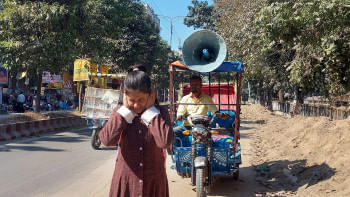

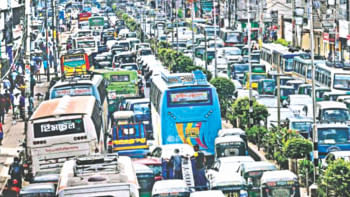


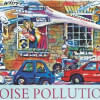
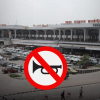

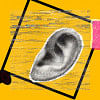


Comments